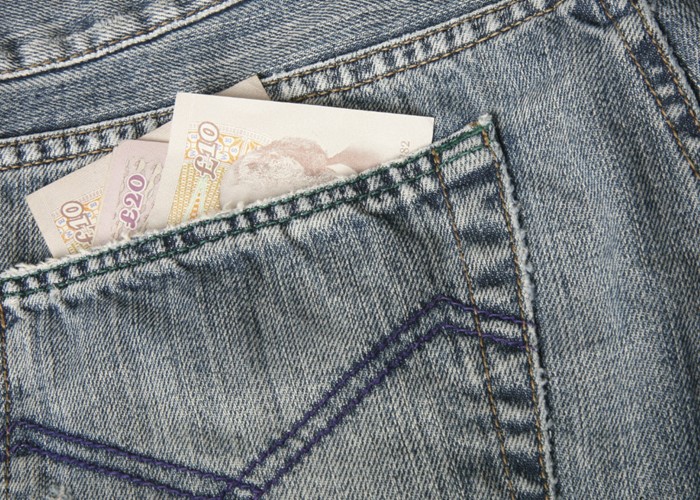What made us richer and poorer in 2014

It was another year of ups and downs. Here are the major things that affected our money.
While 2014 was a better year for the wider economy, was that the case for the pound in our pockets?
From tax to inflation, ISAs to Stamp Duty, let’s take a look at the major things that made us richer and poorer this year.
Inflation
Inflation, as measured by the Office for National Statistics’ Consumer Prices Index measure anyway, has plummeted in the second half of the year. The annual rate now sits at 1%.
The falling price of oil has fed through to motor fuel prices, particularly at the major supermarkets where they have repeatedly cut forecourt prices to match each other.
Supermarkets have also been in a food and drink price war, particularly with discounters Aldi and Lidl, which has also fed through to the inflation rate.
More: Inflation drops to 12-year low
Income Tax
The personal allowance of Income Tax hit the magic £10,000 mark. Good news for people working part-time and those on low incomes.
However, at the other end of the spectrum, more people found themselves in the higher (40%) tax band after it only increased to £41,865, a process known as fiscal drag.
Interest rates
Despite forecasts at the end of last year that the Bank of England would increase the Base Rate at the end of this year, it has remained at 0.5% throughout and may not increase until much later in 2015.
The reason? Low inflation mainly, although the bank is also unconvinced that all of the “spare capacity” in the economy is being used, so that has acted as something of a brake too.
This has meant no good news for savers looking for a better return on their money. Rates on both savings accounts and Cash ISAs have continued to fall throughout the year, with current accounts and slightly riskier peer-to-peer accounts, which remember aren’t protected by the Financial Services Compensation Scheme, still looking better bets.
However, it’s the reverse in the mortgage market, where interest rates have continued to fall, particularly on fixed rates, despite the withdrawal of Funding for Lending which allowed lenders to access cheap cash. This is mostly because lenders want to get as many people on their books as possible before any Bank of England interest rate rise.
On mortgages, it’s worth pointing out though that some standard variable rates (SVRs) have risen, so if you’re on your lender’s SVR it might well be worth having a look to see if there’s a cheaper fixed rate out there. Just make sure you take any fees into account too.
Meanwhile, personal loan rates have also fallen throughout the year and now stand at all-time record lows.
So it was a good year if you needed to borrow.
More: Where to earn most interest on your cash
ISA limits
The Government sprang some major surprises in this year’s Budget speech, including major pension reforms such as abolishing the need to buy an annuity with your pension on retirement. However, these don’t take effect until next year.
What did happen this year, on 1st July to be precise, was a huge increase in the annual tax-free ISA allowance to £15,000. What’s more, you can save that in any combination of cash and/or stocks and shares. And it’s also much easier to transfer from one type of ISA to another. A shame that Cash ISA interest rates haven’t risen to the occasion.
Stamp Duty
Another surprise announcement, this time from the Autumn Statement. After many calls, George Osborne scrapped the so-called ‘slab’ flat rate system, replacing it instead with a tiered system.
That means most people will pay less Stamp Duty, although it is designed to hit people with million-pound properties.
More: Stamp Duty explained
Investment platform charges
Following a major set of rule changes known as the Retail Distribution Review (RDR), investment platforms are being made to stop taking commission from investment platforms. As a result there is a new class of funds known as ‘clean’ funds.
The subsequent change in pricing this introduced led to something of a price war with the major investment platforms, led by Hargreaves Lansdown, reducing their charges.
More: The cheapest investment platforms for stocks & shares ISAs
Credit card price war
The battle to top the credit card best buy tables shows no sign of stopping, at least when it comes to 0% cards. Changes throughout the year mean people with credit card debt to pay off can now enjoy up to 35 months interest free (courtesy of the Barclaycard Platinum card).
Meanwhile, people looking to spread the cost of a purchase can have up to 23 months via the Santander 123 card (note that an annual fee of £24 applies, although you can avoid this in the first year by moving your current account to the Santander 123 account).
More: The best 0% balance transfer credit cards
The best 0% purchase credit cards
More end of year reviews:
What the stock market did in 2014
Most Recent
Comments
Be the first to comment
Do you want to comment on this article? You need to be signed in for this feature








